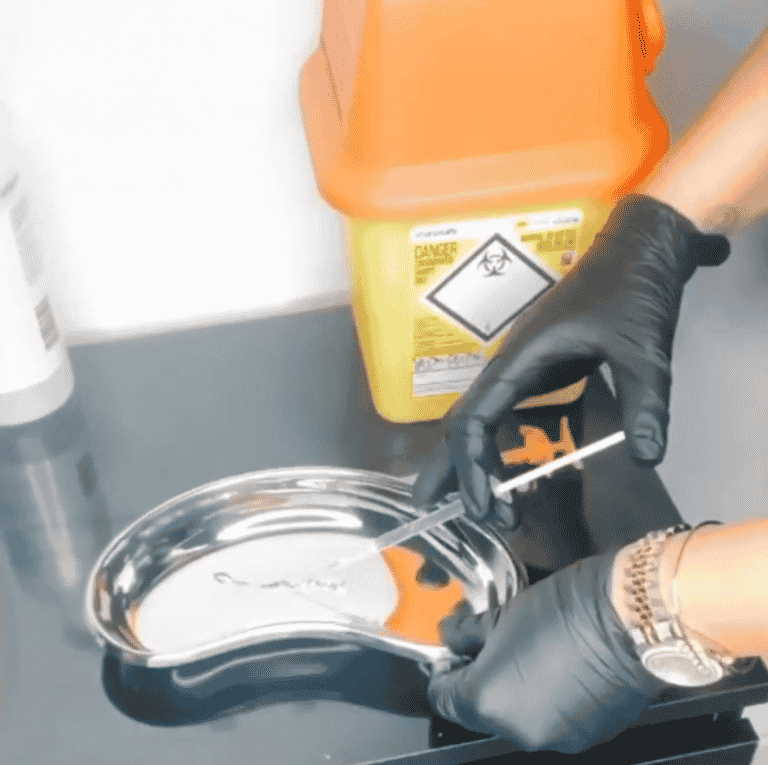How well does e.p.t.q. filler dissolve using Hyaluronidase?
Dermal fillers can make a great addition to glamour to one’s face. Whether it’s clearer skin, lips plump, or youthful appearance, there’s plenty of that. To get that lovely glow, dermal filler is the finest option. Dermal fillers are popular between both men and women because they make you look and feel younger and confident.
This dermal filler is the lightest in consistency and has a delicate texture to treat the dermal layers. E.P.T.Q contains a high quantity of hyaluronic acid, naturally found in our skin that helps it stay hydrated and plump by holding water. It is impossible to dissolve dermal fillers that are not made of hyaluronic acid. It increases collagen formation and flushes itself out of the system over time. It is best to cure the anti-aging effects
Hyaluronidase and e.p.t.q. filler
Hyaluronidase is an enzyme with soluble protein that helps break down hyaluronic acid, which is found in dermal fillers. The solution works by dissolving the links that hold the hyaluronic acid molecules together, allowing the body to reabsorb them in a natural process that it already knows how to perform. It enhances tissue transparency, breaks the molecular bonds that hold hyaluronic acid together, and boosts the natural cellular processes that allow it to diffuse.
Hyaluronidase has an instant effect and a half-life of two minutes, with a 24 to 48-hour activity period. It has a short half-life, yet its effectiveness lasts for a long time. This could be due to the minimal number of units required to have a clinically meaningful effect; as a result, even after the hyaluronidase has mostly degraded, it continues to act.

Why it is necessary to dissolve E.P.T.Q filler in emergency cases?
The dosage required is indicated by many factors, including whether the hyaluronic acid filler is particulate or non-particulate, the degree of cross-linking, and the hyaluronic acid concentration. Different physical characteristics of hyaluronic acid fillers affect their breakdown by hyaluronidase in a time- and dose-dependent manner.
A high dosage pulsed procedure should be used if a vascular blockage is suspected. Hyaluronidase should be injected all over the area, including the vessel’s route. The vascular walls will be permeated by perivascular hyaluronidase. To encourage dispersion and mechanical breakdown, it is good to massage the region. After 1 hour, check for the capillary refill and make any necessary adjustments.
Although vascular occlusion is generally sudden, the Aesthetic Complications Expert group has discovered several situations where the signs of ischemia appear hours or even days later. This could be because the dermal filler is intravascular but becomes caught at a bifurcation or branch point, causing an occlusion later. Suppose the venous return is disrupted due to secondary swelling after hydrophilic dermal filler injection. In that case, this might result in increased pressure in the arterial tree and a loss in tissue perfusion.
Why it is necessary to dissolve E.P.T.Q filler if it’s not placed properly?
When the aesthetic treatment does not achieve the intended result, or there is a risk of vascular blockage or approaching necrosis (tissue death), which could threaten healthy tissue, these fillers may need to be dissolved.
Furthermore, to re-treat the undissolved fillers, hyaluronidase can be repeated in as little as 2 days. However, it is recommended to wait 1-2 weeks before adding more dermal filler to a previously dissolved area to ensure that all inflammation and damage has gone and the patient has returned to baseline.
Allergy test and its benefits before E.P.T.Q treatment?
A history of allergic reactions to wasp or bee stings increases the risk of an allergic reaction to hyaluronidase. It should be considered a relative contraindication because stinging insect venom may contain hyaluronidase, and this mechanism could be the source of hypersensitivity in affected individuals.
The patient must do a skin patch test at least twenty minutes before the surgery in an emergency situation. The skin patch test involves injecting Hyaluronidase into the forearm’s surrounding tissues and monitoring evidence of reaction (i.e., hives or wheals). Treatment with Hyaluronidase is not possible if a positive patch test result is found. Erythema or redness, as well as mild vasodilation, are possible side effects.